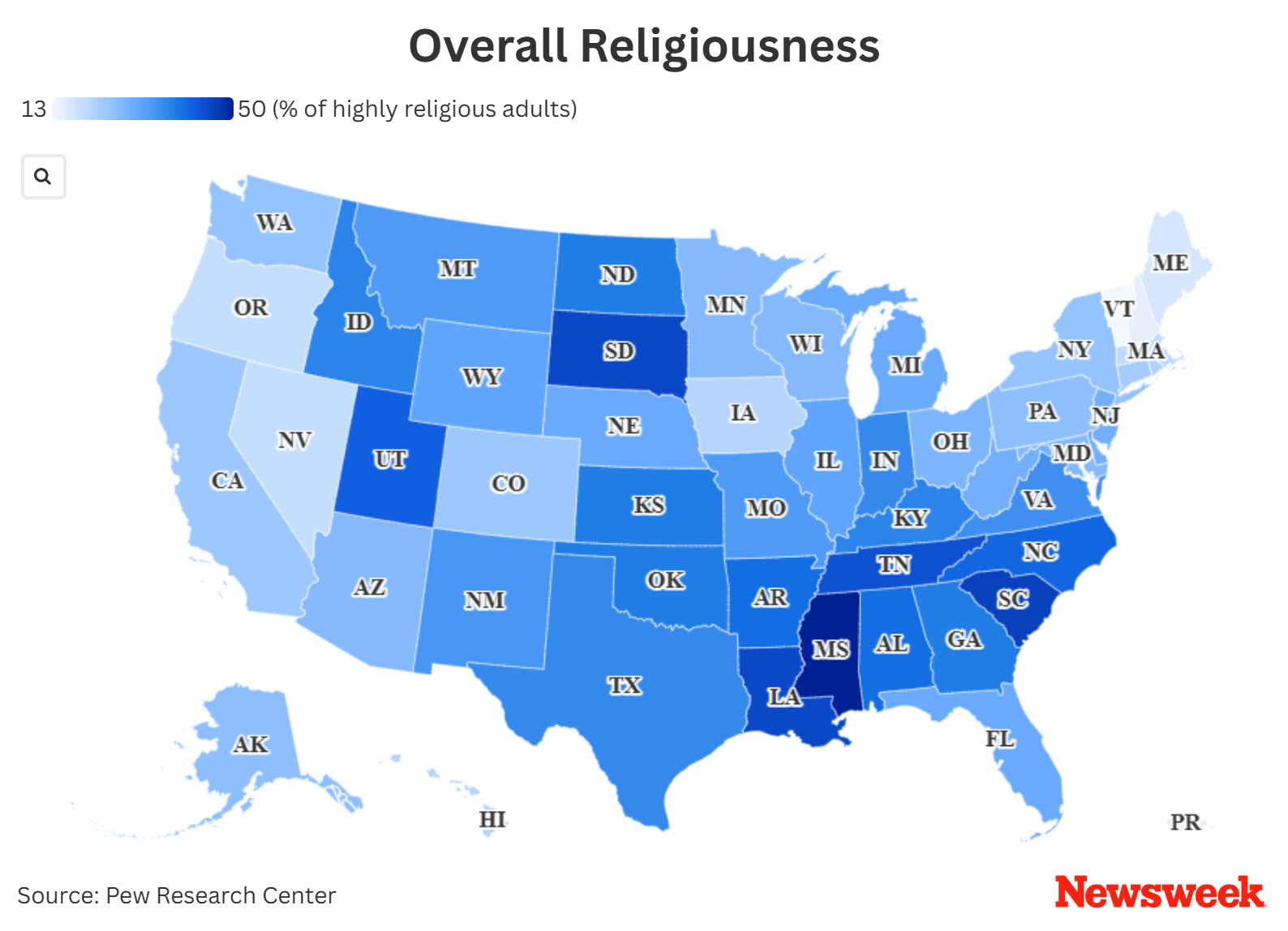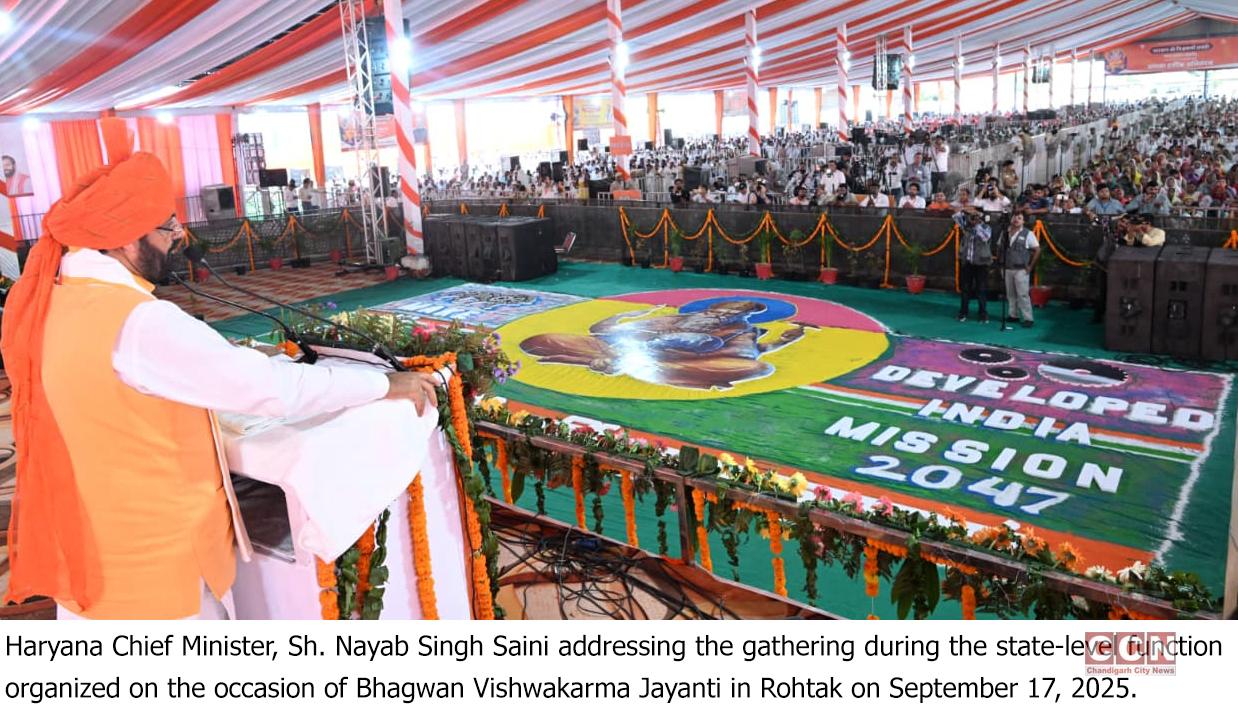
Newsweek has created maps showing the most and least religious states, amid nationwide religious decline, with Mississippi the most and Vermont the least.
The maps are based on the Pew Research Center’s publishing of several visual illustrations, based on its 2023-24 Religious Landscape Study, on Tuesday.
Why It Matters
How Americans relate to religion affects voting, education, social services and civic organizations.
But America is in the “second stage” of a transition from being religious to secular, according to a study published in the academic journal Nature Communications in August.
The proportion of non-religious people in America has long been growing – Newsweek previously created a map showing where in the country this is happening most. But these new Pew maps show that this change varies across states.
What To Know
Mississippi is the most “overall religious” state, according to Pew’s map, with 50 percent of adults who are “highly religious,” followed by South Carolina with 46 percent of “highly religious” adults and 45 percent in South Dakota and Louisiana.
The rest of the top 10 are: Tennessee (44 percent), Utah (42 percent), North Carolina (41 percent), Arkansas (40 percent), Alabama (40 percent) and Kansas (38 percent).
Conversely, the least religious state was Vermont with 13 percent of adults “highly religious,” followed by New Hampshire (15 percent) and Maine (17 percent).
The rest of the bottom 10 states, after the District of Columbia (18 percent), are: Nevada and Oregon (19 percent), Massachusetts (20 percent), Hawaii and Iowa (21 percent), Rhode Island (22 percent) and Connecticut (23 percent).
Mississippi comes up as number one for every other metric looked at by Pew, including the “importance of religion,” “religious attendance,” “frequency of prayer,” and “belief in God.”
Whether people attend religious services can be a significant marker for how much religion is practically impacting certain aspects of people’s lives, such as fertility.
Analysis by the Institute for Family Studies shows a connection, finding that fertility rates among weekly-attending religious Americans have never dropped much below 2 children per woman.
Comparatively, fertility rates among less-than-weekly-attending Americans drop to around 1.7 and below 1.5 for nonreligious Americans, based on data from the National Survey of Family Growth (NSFG) from 1982 to 2019 and data from four waves of the Demographic Intelligence Family Survey (DIFS) from 2020 to 2022.
In Mississippi, 54 percent of adults say they attend religious services at least monthly, while 50 percent say the same in South Dakota and 48 percent say it in Utah.
In Vermont,17 percent of adults say they attend religious services at least monthly, while 18 percent say the same in New Hampshire and 19 percent say it in Maine.
“The frequency of attendance matters because the link between religion and fertility is about the practical ways religion impacts people’s lives, not just religion’s ideological values,” family sociologist Nicholas H. Wolfinger previously told Newsweek.
Methodology
Pew’s Religious Landscape Study was conducted between July 17, 2023, and March 4, 2024, among a nationally representative sample of 36,908 respondents. The paper disclaims a margin of error of +/- 0.8 percentage points.
To determine overall religiousness, Pew Research Center combined four survey items—prayer frequency, belief in God or a universal spirit, religion’s importance, and religious attendance—scoring each response 0 (low), 1 (middle) or 2 (high) and summing them to create an overall religiousness scale ranging from 0 to 8.
Pew Research Center then divided respondents into quartiles, classified scores of 7–8 as “highly religious,” and ranked all 50 states and the District of Columbia by the percentage of residents in that top quartile.
What People Are Saying
Michele Margolis, a University of Pennsylvania political scientist, who has studied religious changes, previously told The Associated Press that while young adults often move away from religion, it is “more likely to become important when you get married and have kids.”
Co-author of Pew’s Religious Landscape Study, Gregory Smith, said: “These kinds of generational differences are a big part of what’s driven the long-term declines in American religion. As older cohorts of highly religious, older people have passed away, they have been replaced by new cohorts of young adults who are less religious than their parents and grandparents.”
What Happens Next
While the South remains a bastion of traditional religious observance, long-term national trends point toward continued secularization. As demographic shifts continue—particularly with younger, more diverse, and less religious generations becoming a larger share of the adult population—experts anticipate further declines in religious affiliation.



